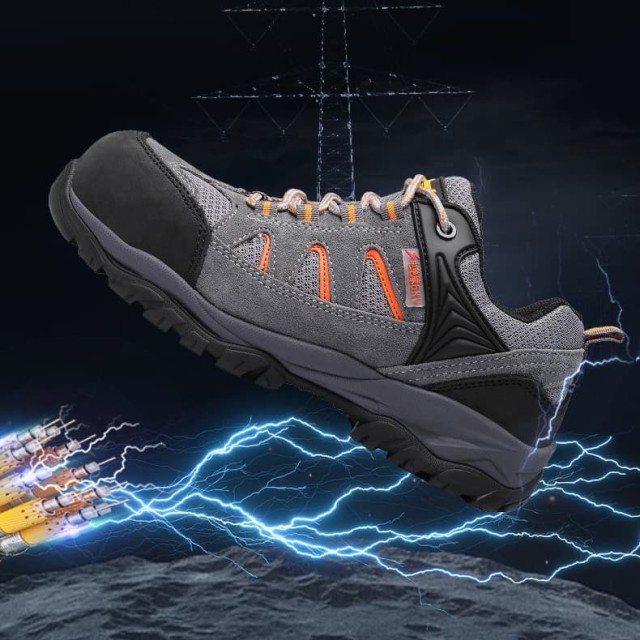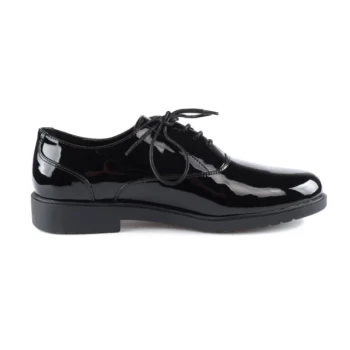Workplace electrical hazards demand specialized footwear that balances conductivity with insulation—a critical safeguard against shocks, arcs, and static buildup. This guide breaks down the science behind EH-rated footwear and how to select the right protection for your industry.
Electrical Safety Footwear Essentials
How Electrons Behave in Safety Shoes
Electrical hazard (EH) footwear controls electron flow through engineered resistance. Materials like carbon-loaded rubber or polyurethane create controlled pathways, either dissipating static charges or blocking live circuits. Research shows proper footwear can reduce static-related incidents by over 70% in high-risk environments.
Key functions:
- Static dissipation: Prevents sparking in flammable atmospheres
- Circuit interruption: Insulates against live wires up to 600V (per ASTM F2413)
- Grounding: Channels stray currents safely in utility work
Static-Dissipative vs Conductive: When Grounding Matters
Footwear falls into three categories by resistivity (measured in megohms):
| Type | Resistivity Range | Best For |
|---|---|---|
| Conductive | Explosive material handling | |
| Static-Dissipative | 1MΩ–100MΩ | Electronics manufacturing |
| Insulating | >100MΩ | Electrical utility maintenance |
CSA Z195 standards specify conductive soles for explosive dust environments, while ESD 35-rated shoes (35MΩ) dominate automotive assembly lines to prevent component damage.
The Science Behind Resistance Ratings
ASTM F2412-2005 certifies footwear through rigorous testing:
- Dielectric tests: Submerging soles in water while applying 18kV for 60 seconds
- Ohm-meter validation: Ensuring resistivity stays within designated ranges
- Abrasion trials: Simulating 2+ years of wear to confirm maintained protection
Industry-Specific Protection Protocols
Manufacturing Floor Electrical Thresholds
Food processing plants using ammonia refrigeration require SD footwear (1MΩ–100MΩ) to prevent static ignition. Meanwhile, semiconductor cleanrooms need ESD 10-rated shoes (
Utility Worker Arc Flash Considerations
OSHA mandates EH-rated boots with ≥100MΩ resistance for linemen working on 480V+ systems. Composite toe caps (non-metallic) prevent current pathways if tools contact live components.
Automotive Spark Prevention Systems
In paint spray booths, conductive shoes (
Maintaining Protective Integrity
When Insulation Degrades: Warning Signs
Replace EH footwear if you notice:
✓ Cracks penetrating the sole's conductive layer
✓ Embedded metal fragments compromising resistivity
✓ Moisture wicking into midsole layers
Testing Protocols for Ongoing Compliance
Monthly verification steps:
- Visual inspection: Check for sole separation or punctures
- Multimeter test: Confirm resistivity hasn't drifted beyond rating
- Professional recertification: Required annually for ASTM compliance
Upgrade Your Safety Standards with 3515
As a trusted manufacturer for industrial distributors, we engineer EH footwear that meets exacting ASTM and CSA specifications. Whether you need static-dissipative boots for cleanrooms or insulating soles for substations, our production capabilities ensure bulk orders without compromising protection. [Contact 3515] to discuss your workplace safety footwear needs.
Research confirms: Proper EH footwear reduces electrical injury rates by over 60% in high-risk sectors—protection that starts from the ground up.
Related Products
- Durable Leather Safety Boots for Wholesale & Custom OEM Manufacturing
- Puncture-Resistant Velcro Safety Boots for Wholesale & Custom Manufacturing
- Safety Footwear Wholesale Manufacturer for Custom OEM/ODM Production
- Wholesale Safety Footwear Manufacturer for Bulk & Custom OEM Orders
- Wholesale Anti-Smash & Puncture-Proof Safety Shoes Custom Manufacturing for Brands
Related Articles
- How Steel Toe Boots Meet Industry Safety Standards and Reduce Workplace Injuries
- Steel Toe Boots vs. Modern Alternatives: Making the Right Safety Choice
- How Safety Standards for Steel Toe Boots Protect Workers Beyond Impact Resistance
- Steel Toe Work Boots: Balancing Safety and Comfort for Demanding Jobs
- How Steel Toe Boots Combine Safety Compliance with All-Day Comfort



















